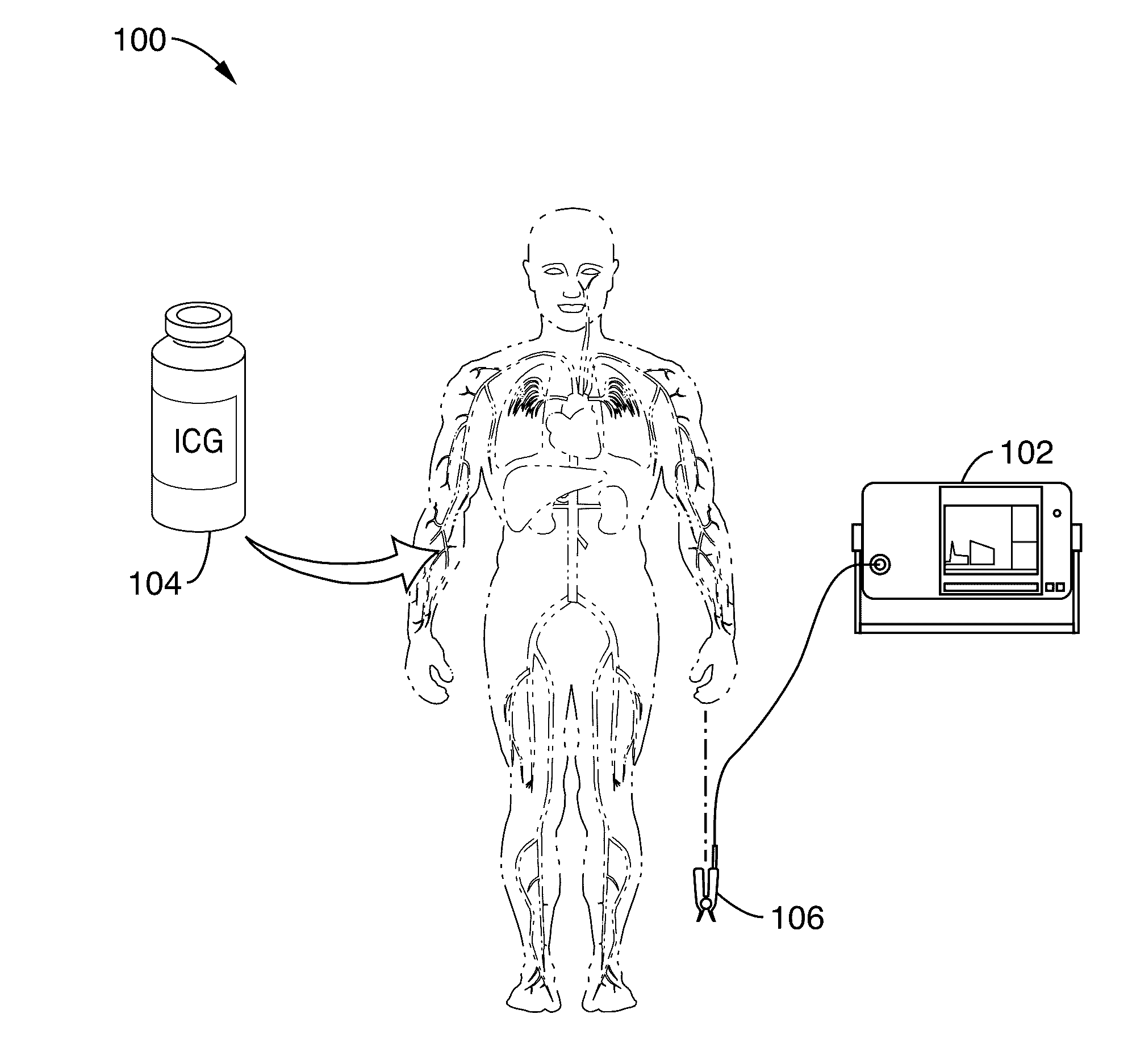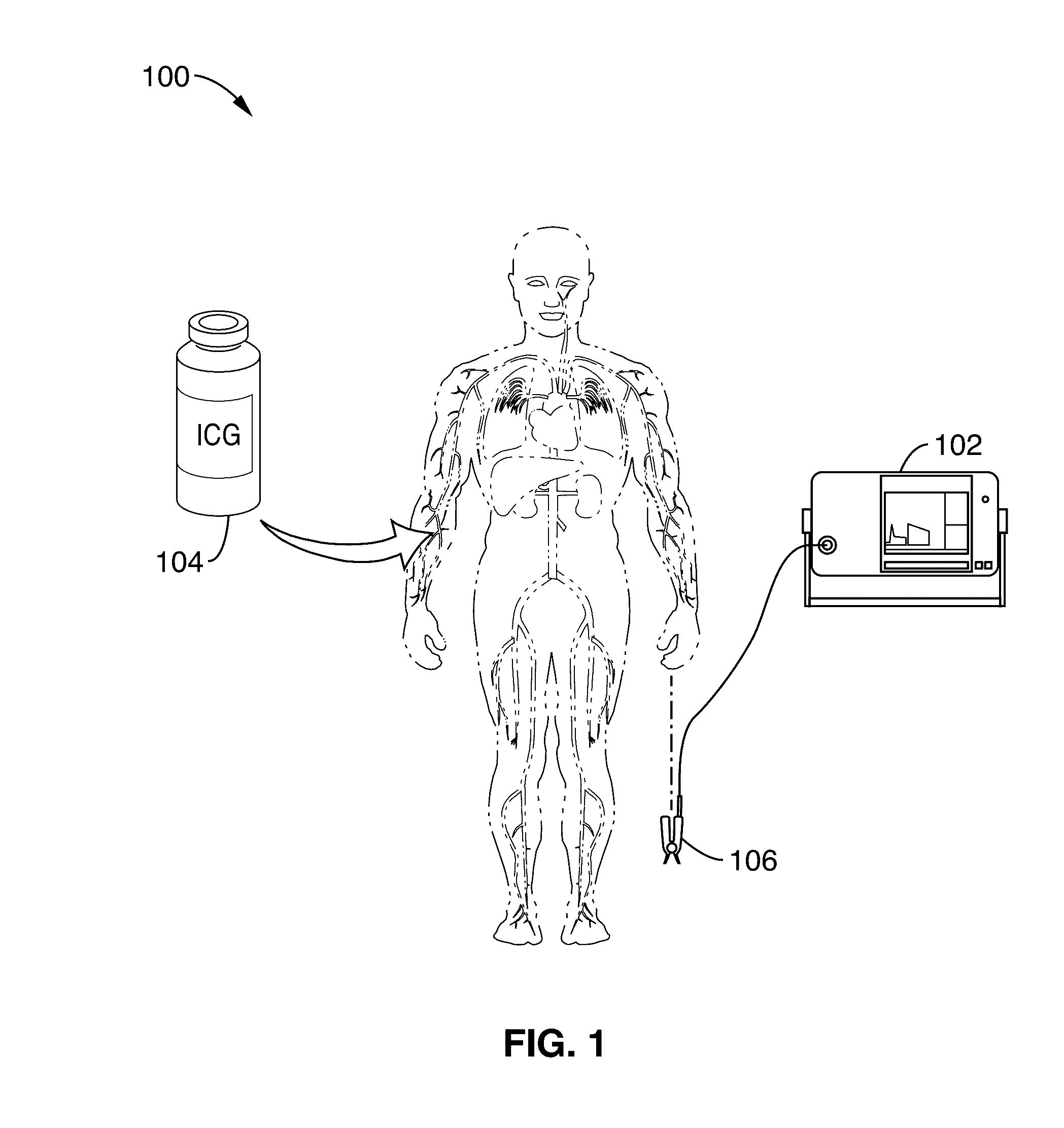Rapid, reproducible, non-invasive predictor of cadaveric donor liver graft utilization
a cadaveric donor and liver graft technology, applied in the field of liver tissue function assessment, can solve the problems of increasing wait-list mortality, poor initial graft function and/or long-term risk, and clinical and laboratory criteria for measuring liver quality are not reliable predictors
- Summary
- Abstract
- Description
- Claims
- Application Information
AI Technical Summary
Benefits of technology
Problems solved by technology
Method used
Image
Examples
example
[0029]To evaluate the method for rapid, non-invasive, quantitative assessment of liver function, performed before liver graft procurement, a LiMON liver function monitor, manufactured by Pulsion Medical Systems, Munich, Germany, was used for the assessment of brain-dead donor livers by measuring Indocyanine Green Plasma Disappearance Rates (ICG-PDRs). Referring to FIG. 1, a schematic diagram 100 of how the ICG-PDR was measured in this example is presented. The LiMON monitor 102 measures Indocyanine Green (ICG) 104 clearance from the blood, after the ICG is administered intravenously to the donor, by non-invasive pulse-densitometry using, for example, a finger probe 106.
[0030]Referring to FIG. 2A through FIG. 2C, a close-up view 200 of ICG-PDR measurement by a non-invasive pulse-densitometry finger probe is presented. Injected ICG 202 is detected by a sensor 204 on the finger 206 from fractional pulsatile changes 208, 210 in optical absorption using LED lights 212. The optical peak a...
PUM
 Login to View More
Login to View More Abstract
Description
Claims
Application Information
 Login to View More
Login to View More - R&D
- Intellectual Property
- Life Sciences
- Materials
- Tech Scout
- Unparalleled Data Quality
- Higher Quality Content
- 60% Fewer Hallucinations
Browse by: Latest US Patents, China's latest patents, Technical Efficacy Thesaurus, Application Domain, Technology Topic, Popular Technical Reports.
© 2025 PatSnap. All rights reserved.Legal|Privacy policy|Modern Slavery Act Transparency Statement|Sitemap|About US| Contact US: help@patsnap.com



